Table of Contents[Hide][Show]
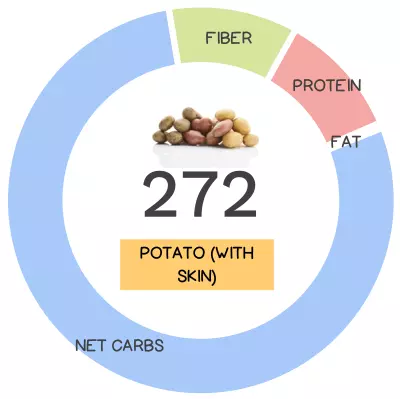
Potato – the quintessential American vegetable. Prepared in a multitude of ways and adored by all – in fact they are the top consumed vegetable in the United States, with Americans devouring upwards of 50 pounds per year (when accounting for all sources including fresh, frozen & potato chips). While potatoes haven’t always had the best reputation as far as healthy foods go, this is in large part based on how they are consumed – ‘French fries, I’m looking at you!’ In actuality, these root veggies are definitely worthy of our attention. Best consumed as leftovers, potatoes are more nutrient-dense than many people realize. In fact, they are kind of “spud-tacular”!
Potatoes are the top consumed vegetable in the United States with Americans consuming upwards of 50 pounds per year!
The potato (Solanum tuberosum) is a starchy tuber member of the Solanaceae family which are collectively known as ‘nightshades.’ There are more than 2,000 species in this family, the vast majority of which are inedible and many of which are highly poisonous (like deadly nightshade, aka belladonna, and jimsom weed). Other edible members include tomatoes, eggplants, peppers, and tobacco. Members of this family don’t always get the best reputation because of their association with inflammatory compounds, but for those who can tolerate them, they are a worthy addition to our diet!
Potatoes are members of the ‘nightshade’ family, along with 2,ooo other species, most of which are inedible and highly poisonous – other edible members include eggplant, peppers, and tomatoes.
Wild potatoes originated in southern Peru, where they were first domesticated roughly 7,000 to 10,000 years ago. Potatoes were introduced to Europe from the Americas in the second half of the 16th century by the Spanish. While they were slow to be adopted, eventually this veggie went on to play a major role in the European 19th century population boom, with disastrous consequences during the Great Irish Famine from 1845 to 1852. In North America, most potatoes grown arrived with European settlers and not from their South American birthplace. Today, potatoes have enormous global popularity. They are a staple in many parts of the world and an integral part of the world’s food supply. In fact, they’re the most important non-cereal crop on the planet. World-wide, there are over 5,000 different varieties of potatoes spanning all sizes and colors with the main categories being white potatoes, brown potatoes (aka Russet), red potatoes, yellow potatoes (aka Yukon), purple potatoes, fingerling potatoes, and petite potatoes.
The 3 Simplest Ways to Eat a Healthy Diet

Essential Eating Patterns for Lifelong Health
Learn the three science-backed eating patterns that support lifelong health, regardless of what diet you follow.
In this webinar, Dr. Sarah guides you to adopt these impactful eating patterns, embrace a permissive dietary structure, incorporate quality-of-life foods, and make small changes that collectively add up to make a substantial difference in your overall health.
Buy now for instant digital access.
Nutrivore Score for Potato – 272

Potatoes have a Nutrivore Score of 272, making them a medium nutrient-dense food! Plus, they are a low-carb food; potatoes have 2.5 grams net carbohydrates per 1-cup serving.
Per serving, potatoes are an excellent source (20-50% daily value) of polyphenols, vitamin B6 (pyridoxine), and vitamin C; and a good source (10-20% daily value) of copper, dietary fiber, manganese, potassium, vitamin B1 (thiamin), and vitamin B3 (niacin).
Ditch Diets. Embrace Nutrients. Start with this FREE Guide.
Sign up for the free Nutrivore Newsletter, your weekly, science-backed guide to improving health through nutrient-rich foods — without dieting harder —and get the Beginner’s Guide to Nutrivore delivered straight to your inbox!

Potato Nutrition Facts
One serving of potatoes is standardized to 1 cup, diced or about 150 grams (5.3 ounces). A typical small potato (1 3/4″ to 2 1/2″ diameter) weighs 170 grams, which means: one serving of potatoes is roughly equivalent to 1 small potato. By comparison, a typical medium potato (2 1/4″ to 3 1/4 ” diameter) weighs 213 grams (~ 1.5 servings), while a large potato (3″ to 4 1/4″ diameter) weighs 369 grams (~2.5 servings). When you cook potatoes, their volume remains relatively consistent: 1 raw potato is roughly equivalent to 1 baked potato.
Potato Nutrition Facts Per Serving
| Potatoes, flesh and skin, raw | Nutrivore Score: 272 | Nutrient Density: Medium |
|---|---|---|
| Serving Size: 1 cup, diced (150 grams) | Protein: 3.1 grams | Net Carbohydrates: 2.5 grams |
| Calories: 116 | Total Fat: 0.1 grams | Dietary Fiber: 3.2 grams |



| VITAMINS | ||
|---|---|---|
| Vitamin A | 0.0 μg RAE | 0% DV |
| Vitamin B1 (Thiamin) | 121.5 μg | 10% DV |
| Vitamin B2 (Riboflavin) | 48.0 μg | 4% DV |
| Vitamin B3 (Niacin) | 1.6 mg | 10% DV |
| Vitamin B5 (Pantothenic Acid) | 0.4 mg | 9% DV |
| Vitamin B6 (Pyridoxine) | 447.0 μg | 26% DV |
| Vitamin B7 (Biotin) | 2.7 μg | 9% DV |
| Vitamin B9 (Folate) | 22.5 μg | 6% DV |
| Vitamin B12 (Cobalamin) | 0.0 μg | 0% DV |
| Vitamin C | 29.6 mg | 33% DV |
| Vitamin D (D2 + D3) | 0.0 μg | 0% DV |
| Vitamin E | 0.0 mg | 0% DV |
| Vitamin K | 3.0 μg | 3% DV |
| Choline | 18.2 mg | 3% DV |
| Myo-Inositol | 120.5 mg | ~ |
| CoQ10 | 0.2 mg | ~ |
| FUNCTIONAL FATS | ||
|---|---|---|
| MUFA | 0.0 g | 0% DV |
| ALA | 15.0 mg | 1% DV |
| EPA + DHA | 0.0 mg | 0% DV |
| CLA | ~ | ~ |
| Linoleic Acid | 0.0 g | 0% DV |
| MCT’s | 0.0 g | ~ |
| MINERALS | ||
|---|---|---|
| Calcium | 18.0 mg | 1% DV |
| Copper | 165.0 μg | 18% DV |
| Iodine | ~ | ~ |
| Iron | 1.2 mg | 7% DV |
| Magnesium | 34.5 mg | 8% DV |
| Manganese | 229.5 μg | 10% DV |
| Phosphorus | 85.5 mg | 7% DV |
| Potassium | 637.5 mg | 14% DV |
| Selenium | 0.6 μg | 1% DV |
| Sodium | 9.0 mg | 0% DV |
| Zinc | 0.5 mg | 4% DV |
| PHYTONUTRIENTS | ||
|---|---|---|
| Carotenoids | 15.0 μg | ~ |
| Polyphenols | 244.5 mg | ~ |
| Phytosterols | 7.8 mg | ~ |
| Glucosinolates | ~ | ~ |
| Thiosulfinates | ~ | ~ |
| Betalains | ~ | ~ |
| AMINO ACIDS & PEPTIDES | ||
|---|---|---|
| Taurine | ~ | ~ |
| Ergothioneine | ~ | ~ |
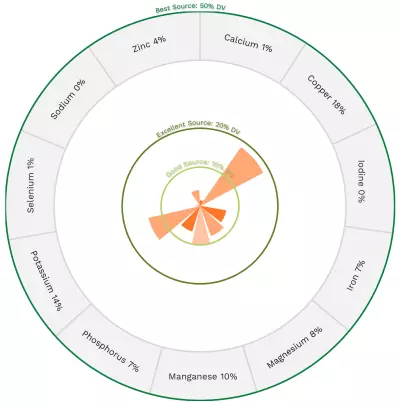


Potato Nutrition Varies With Cooking and Processing
The Nutrivore Score of potatoes varies depending on processing, method of preparation, and portion of the potato being consumed. For instance, the nutrition in potato skins is different than that found in the flesh of the veggie. Potato skins are high in fiber, but it’s also important to note that glycoalkaloids develop right under the skin, and in some cases, the peel contains upwards of 98% of the total glycoalkaloid content of this veggie. In addition to fresh potatoes, frozen and canned potatoes are conveniently available at the grocery store.
| NUTRIVORE SCORE | |
|---|---|
| Potatoes, baked, flesh, without salt | 142 |
| Potatoes, baked, flesh and skin, without salt | 255 |
| Potatoes, baked, skin, without salt | 178 |
| Potatoes, boiled, cooked in skin, flesh, without salt | 148 |
| Potatoes, boiled, cooked in skin, skin, without salt | 3571 |
| Potatoes, boiled, cooked without skin, flesh, without salt | 133 |
| Potatoes, canned, drained solids, no salt added | 143 |
| Potatoes, canned, solids and liquids | 1631 |
| Potatoes, flesh and skin, raw | 272 |
| Potatoes, frozen, whole, cooked, boiled, drained, without salt | 1451 |
| Potatoes, microwaved, cooked in skin, flesh and skin, without salt | 276 |
| Potatoes, microwaved, cooked in skin, skin, without salt | 2491 |
| Potatoes, raw, skin | 3061 |
Potato Nutrition Varies With Variety
World-wide, there are over 5,000 distinct varieties of potatoes, ranging in size, color, starch content, flavor and nutrient profile, which means their Nutrivore Scores also vary. This veggie is one of the most versatile ingredients in the kitchen and can be prepared in a multitude of ways. Try incorporating different types into your diet, cooked in various ways, to maximize all the benefits potatoes have to offer!
| NUTRIVORE SCORE | |
|---|---|
| Potatoes, flesh and skin, raw | 272 |
| Potatoes, red, flesh and skin, raw | 278 |
| Potatoes, russet, flesh and skin, raw | 248 |
| Potatoes, white, flesh and skin, raw | 273 |
Does all this nutrition have you “rooting” for potatoes? Maybe your friends will want to “dig” in too!
Health Benefits of Potato Nutrients
Let’s take a closer look at all of the best and excellent source of nutrients found in a 1-cup serving of potato and see how they benefit our health.
Potatoes Provide 33% DV Vitamin C
Potatoes are an excellent source of vitamin C, providing 33% of the daily value per 1-cup serving!

Vitamin C is a water-soluble vitamin that has powerful antioxidant properties (meaning it can help combat oxidative damage from free radicals and reactive oxygen species) and that serves as an enzyme cofactor (meaning it’s needed for enzymes to do their job, for example vitamin C is necessary for collagen synthesis, which is essential for bones, joints, teeth, blood vessels, skin and eyes) and playing important roles in immune system and skin health. Higher intakes of vitamin C are linked to reduced risk of heart disease, some forms of cancer, type 2 diabetes, cataracts, age-related macular degeneration, and gout. Vitamin C can also help regulate the stress response and reduce anxiety, and there’s preliminary evidence that it may also help prevent Alzheimer’s disease. Learn more about vitamin C here.
Potatoes Provide 244.5 mg of Polyphenols
Potatoes are also an excellent source of polyphenols, providing 244.5 mg of polyphenols per 1-cup serving!
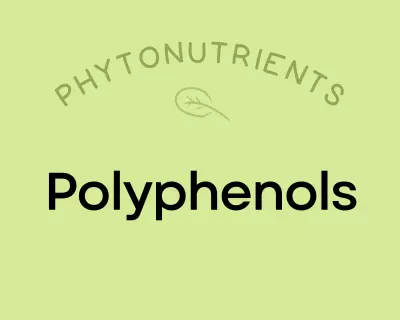
Polyphenols play a huge role in protecting against cancer, heart disease, diabetes, asthma, osteoporosis, neurodegenerative diseases, and other conditions associated with oxidative stress. In fact, a major reason foods like red wine and olive oil (as well as diets rich in both, such as the Mediterranean diet) show up as so beneficial may be due to their high polyphenol content! Along with chronic diseases, supplementing with polyphenols has been shown to protect against infections and reduce the signs of aging. Polyphenols exert their most potent effects by acting as antioxidants—preventing cellular damage by neutralizing hazardous oxygen radicals and improving cellular health as a result (which, in turn, benefits virtually every system in the body). As a result of their antioxidant properties, polyphenols also boost the immune system and protect against both chronic and acute diseases. In addition, polyphenols can help regulate enzyme function, stimulate cell receptors, modulate the functions of inflammatory cells (including T and B lymphocytes, macrophages, platelets, and natural killer cells), alter adhesion molecule expression, affect nerve cells and cardiac muscle cells, and exert antiviral effects. Learn more about polyphenols here.
Potatoes Provide 26% DV Vitamin B6 (Pyridoxine)
Potatoes are a great source of vitamin B6 (pyridoxine), providing 26% of the daily value per 1-cup serving!
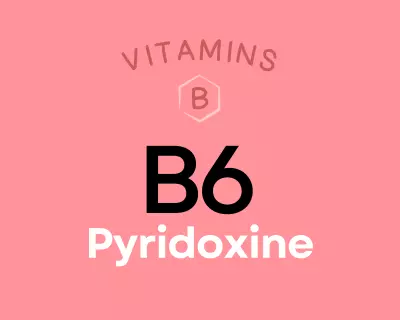
Vitamin B6 (pyridoxine) is a group of six water-soluble compounds with a similar chemical structure, all of which can be converted into their active form of pyridoxal 5’-phospate (PLP). Over 100 different enzymes require vitamin B6 in order to carry out their various functions in protein metabolism, fatty acid metabolism, neurotransmitter production, gluconeogenesis, hemoglobin synthesis, the release of glucose from glycogen, and energy metabolism (particularly the production of ATP in the Krebs cycle). Research suggests vitamin B6 may help protect against cardiovascular disease and certain cancers, could reduce the risk of depression among the elderly, and even reduce symptoms of morning sickness and PMS. Learn more about vitamin B6 here.
Learn What Foods Are the Best Sources of Every Nutrient
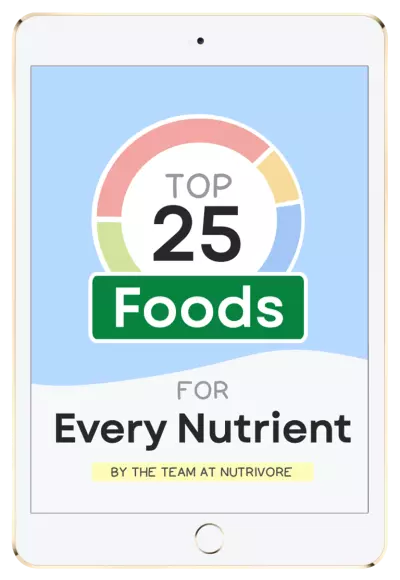
The Top 25 Foods for Every Nutrient
The Top 25 Foods for Every Nutrient e-book is a well-organized, easy-to-use, grocery store-friendly guide to help you choose foods that fit your needs of 43 important nutrients while creating a balanced nutrient-dense diet.
Get two “Top 25” food lists for each nutrient, plus you’ll find RDA charts for everyone, informative visuals, fun facts, serving sizes and the 58 foods that are Nutrient Super Stars!
Buy now for instant digital access.
How Much Potato Should We Eat Per Day?
When it comes to nutrient-dense carbs, root veggies are hard to beat!
Every serving of fresh, whole vegetables or fruit we eat daily reduces the risk of all-cause mortality by 5% to 8%, with the greatest risk reduction seen when we consume five or more servings per day. In fact, consuming 800 grams of vegetables and fruits daily reduces all-cause mortality by 31% compared to eating less than 40 grams daily. A 2017 meta-analysis showed that 2.24 million deaths from cardiovascular disease, 660,000 deaths from cancer, and 7.8 million deaths from all causes could be avoided globally each year if everyone consumed 800 grams of veggies and fruits every day.
Eating vegetables and fruit in abundance lowers risk of cancer, cardiovascular disease, type 2 diabetes, obesity, chronic kidney disease, osteoporosis and bone fragility fractures (including hip fracture), cognitive impairment and dementia (including Alzheimer’s disease), neurodegenerative diseases, asthma, allergies, chronic obstructive pulmonary disease, age-related macular degeneration, cataracts, glaucoma, depression, ulcerative colitis and Crohn’s disease, rheumatoid arthritis, inflammatory polyarthritis, non-alcoholic fatty liver disease, acne, seborrheic dermatitis, and lowers markers of inflammation. Learn more in Importance of Vegetables and Fruit.
Covering half of your plate with a variety of vegetables (and three quarters of your plate if your starchy food is a root vegetable or winter squash) at each meal is a simple way to easily achieve the goal of 5 or more servings of vegetables daily.
Studies show that, for every 100 grams per day increase in root vegetable intake, there was a 24% reduced risk of all-cause mortality! And, although potatoes are sometimes not painted in a good light, this is often due to the way they’re consumed (fried in vegetable oils, eaten as french fries with fast food meals, or munched on as potato chips). After adjusting for confounders, one study found that potatoes are associated with a 25% reduced risk of total mortality.
It’s always best to mix up the veggies you eat day to day (aiming for a wide variety of different vegetables and fruits throughout the week), and potatoes definitely have a place at the table.
Easily track your servings of Nutrivore Foundational Foods!

The Nutrivore Weekly Serving Matrix
The Nutrivore Weekly Serving Matrix digital resource is an easy-to-use and flexible weekly checklist designed to help you maximize nutrient-density and meet serving suggestions of Nutrivore foundational foods, all without having to weigh or measure your foods!
Includes a 22-page instructional guide and downloadable interactive guides.
Buy now for instant digital access.
cITATIONS
Expand to see all scientific references for this article.
Clements RS Jr, Darnell B. Myo-inositol content of common foods: development of a high-myo-inositol diet. Am J Clin Nutr. 1980 Sep;33(9):1954-67. doi: 10.1093/ajcn/33.9.1954. PMID: 7416064.
Fineli Finnish Food Composition Database: Potato, unpeeled, average, raw
Phenol-Explorer: Potato, raw
Phillips KM, Haytowitz DB, Pehrsson PR. Implications of two different methods for analyzing total dietary fiber in foods for food composition databases. Journal of Food Composition Analysis. 2019 Dec;84:103253. https://doi.org/10.1016/j.jfca.2019.103253
Pravst I, Zmitek K, Zmitek J. Coenzyme Q10 contents in foods and fortification strategies. Crit Rev Food Sci Nutr. 2010 Apr;50(4):269-80. doi: 10.1080/10408390902773037. PMID: 20301015.
USDA Food Central Database: Potatoes, flesh and skin, raw
Watanabe T, Kioka M, Fukushima A, Morimoto M, Sawamura H. Biotin content table of select foods and biotin intake in Japanese. Int J Anal Bio-Sci. 2014. Vol 2(4):109-125.


